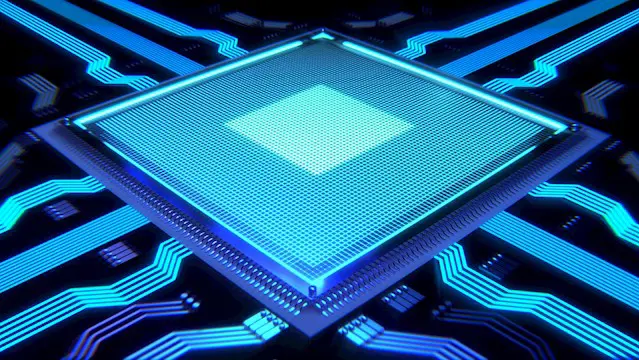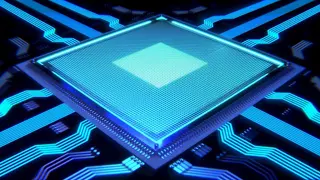
How to become Embedded Firmware, Software, Hardware Engineer
Understand the role of different Embedded engineers - Firmware, Software, Hardware. Course Completion Certificate
Uplatz
Summary
- Certificate of completion - Free
- Reed courses certificate of completion - Free
Add to basket or enquire
Overview
Uplatz offers this in-depth training course on How to become an Embedded Engineer. It is a self-paced course consisting of video lectures. You will be awarded Course Completion Certificate at the end of the course.
Software is a set of code (i.e., instructions) that tells hardware what to do. Hardware is the physical device on which the software runs. Firmware is the permanent software programmed into a read-only memory.
The role of an embedded engineer is to visualize, expand, and execute software into various pre-existing system. This is mostly linked to daily technological devices such as televisions, routers, phone devices, cars etc. In order to become an embedded engineer, one must be able to work together with clients, upper management, and fellow software engineers, designers, and team members all the way through the course of a project to determine the requirements.
To become an embedded engineer, you should typically have a Bachelor's degree in computer science or engineering, or a closely related discipline. Knowledge of programming languages and prior programming experience are necessary, too, as is proficiency in the tools and software used for embedding and updating systems.
Firmware engineers write the algorithms that inform a device how to perform. When you strike the keys on your keyboard, it's firmware that signals the device how to understand your physical measures and convert them into a signal your computer can understand. The day-to-day life of a firmware engineer varies depending on the industry they find themselves in. Some firmware engineers use most of their time to write and test fresh firmware with a comparison of customer interaction. Some engineers use a lot of their time roaming to cooperate with customers in support of prototype devices. The major roles of a firmware engineer include, evaluating a project's firmware needs through client and team meetings, designing a firmware solution to meet project needs and developing and implementing new firmware. A Firmware Engineer also takes care of debugging firmware to ensure it functions properly and evaluating performance and troubleshooting as needed, also incorporating client feedback into firmware revisions. Managing budgetary and time constraints and keeping abreast of technological developments and industry best practices is one of the key roles of firmware engineer.
On the other hand an embedded software engineer is accountable for the design, development, production, testing, and maintenance of embedded systems. The role of software engineer inclines towards the software development side of the equation, which is why this position is also known as an embedded software engineer. The major responsibilities of a software engineer include working on IoT devices and frameworks such as Google Cloud Platform, IBM Watson, Azure, and AWS and Data Processing and Analysis. He also has to be able to process and analyze data using Excel, MATLAB, and Python. A large part of the actual engineering job is technical documentation
Embedded hardware refers to the computer program functions that are specific to various, everyday items. An embedded hardware engineer is the individual who helps to plan and program the functions of these devoted computer chips and systems. However, automobiles, microwave ovens, thermostats, and virtually any form of automated machinery may contain computer command circuitry, built and developed by an embedded hardware engineer. It is important for an embedded engineer to understand the processes that the plan of a machine or device is expected to carry out. The engineer then works through the various ways that these instructions can be programmed and carried out, and then helps to write and embed this code into the chips themselves. Rather than relying on instructions and programs installed in storage media, hardware programming typically writes straight to the chipset itself.
Curriculum
Course media
Description
As a successful Embedded engineer you will be able to:
- Have knowledge about the basic working of a microcontroller system and its programming in assembly language.
- Get experience to integrate hardware and software for microcontroller applications systems. To acquire knowledge about microcontrollers embedded processors and their applications.
- Foster ability to understand the internal architecture and interfacing of different peripheral devices with Microcontrollers
- Foster ability to write the programs for microcontroller.
- Foster ability to understand the role of embedded systems in industry.
- Foster ability to understand the design concept of embedded systems.
- Understand basic concepts in the embedded computing systems area
- Determine the optimal composition and characteristics of an embedded system
- Design and program an embedded system at the basic level
- Develop hardware-software complex
- Understand the Building Blocks of Embedded System
- Know in detail about various Embedded Development Strategies
- Possess knowledge in various processor scheduling algorithms
Who is this course for?
Everyone
Requirements
Passion to learn and succeed!
Career path
- Embedded Systems Engineer
- Embedded Firmware Engineer
- Software Engineer for Embedded Systems
- Embedded Application Engineer
- IoT Product Developer
- Embedded Software Developer/Senior Developer
- Software Quality Assurance Engineer for Embedded Systems
- Embedded Design Engineer
- Technical Architect
- Hardware Engineer
- Embedded Engineer
- Software Validation Engineer - Embedded
- Quality Assurance Engineer
Questions and answers
Currently there are no Q&As for this course. Be the first to ask a question.
Certificates
Certificate of completion
Digital certificate - Included
Course Completion Certificate by Uplatz
Reed courses certificate of completion
Digital certificate - Included
Will be downloadable when all lectures have been completed
Reviews
Currently there are no reviews for this course. Be the first to leave a review.
Legal information
This course is advertised on reed.co.uk by the Course Provider, whose terms and conditions apply. Purchases are made directly from the Course Provider, and as such, content and materials are supplied by the Course Provider directly. Reed is acting as agent and not reseller in relation to this course. Reed's only responsibility is to facilitate your payment for the course. It is your responsibility to review and agree to the Course Provider's terms and conditions and satisfy yourself as to the suitability of the course you intend to purchase. Reed will not have any responsibility for the content of the course and/or associated materials.


